The sperm whale is Oceans deepest “Free diver”, the loudest animal on earth, and the most mysterious whale in the Oceans. So the sperm whale is like no other whale species. Sperm whales are common where the Oceans are deep enough to dive and where there is land nearby volcanic continental plates. Sperm whales mainly feed on Giant squid. A giant squid can reach lenghts up to 11 meters long from head to tentacle. Sperm whales do have huge fights with them down in the deep. The head of an adult sperm whale is full of scars because of these fights. A giant squid “entangels” than it’s 8 tentacles around the head of the sperm whale during their fight. Giant squids are very strong and they have an average weight of 500 / 1000 KG but they are no match to an adult sperm whale at all.
Sperm whales only have teeth in their lower jaw and their upper jaw has “pockets” to put their teeth in when they close their mouth. Sperm whales are capable to dive almost 2 miles deep into the dark Oceans and they can be underwater for almost 1 hour. When a sperm whale dives it starts to use their sonar (clicks) just when there is no sunlight left anymore in the Ocean. The same thing happens when a sperm whale starts to surface. At the moment the sperm whale sees sunlight comming through the Ocean water it stops their sonar (clicks). When the sperm whale surfaces it starts to blow out of their single blowhole. This single blowhole is so typical because it’s not on top their head but left located. Sperm whales create therefore a “45 degrees” blow. The myth is that every single blow of a sperm whale stands for every minute it was into the depths of the Ocean. So their blows can easily be up to 60 times!
Other typical facts about sperm whales are that they are very social to their own species. Family is number one for them but they also make easily freinds together with sperm whales from other pods and they do remember these freinds for a lifetime. But there are some social sperm whale exceptions. Sperm whales do not go along very well together with Pilot whales but on the other hand they can adopt a deformed Bottlenose dolhin within their pod. In september sperm whale bulls leave their family and travel up to the north arctic Atlantic Ocean. At that moment they leave the female sperm whales, and calves, around the Atlantic equator. Sperm whale bulls only appear around the equator to mate and to protect their family and calves. Other typical facts about sperm whales are their small pectoral fins and their “spermaceti” in their head. This “spermaceti organ” is extremely important for sperm whales while diving and so feeding. On the surface spermaceti is almost liquid and when they dive it becomes solid. For their “clicks” their spermaceti is important and it makes sperm whales unique. Sometimes sperm whales do beach in the Netherlands. When it happens it’s 100 % for sure that it concerns a sperm whale bull.
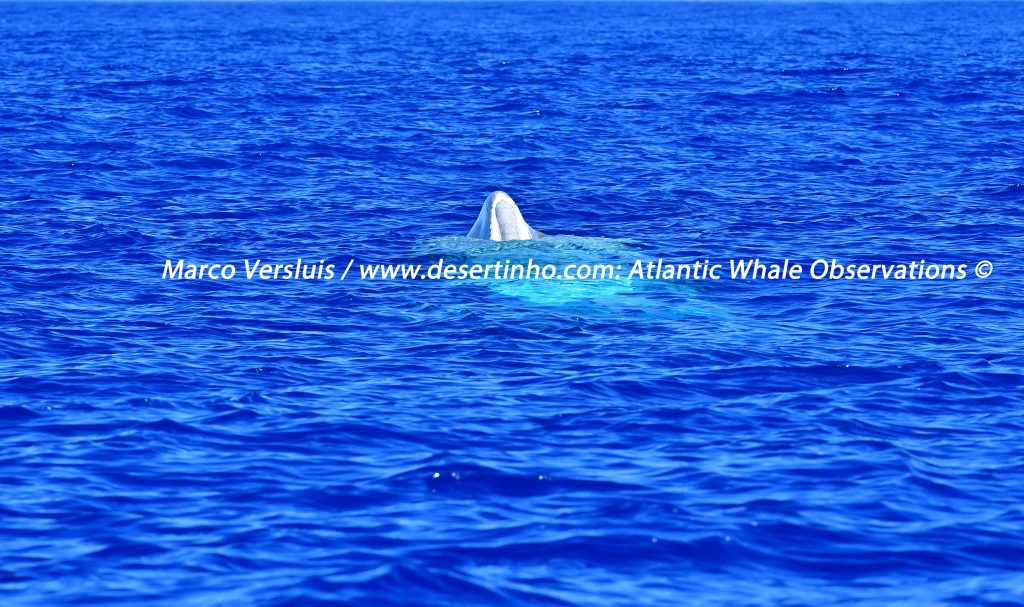
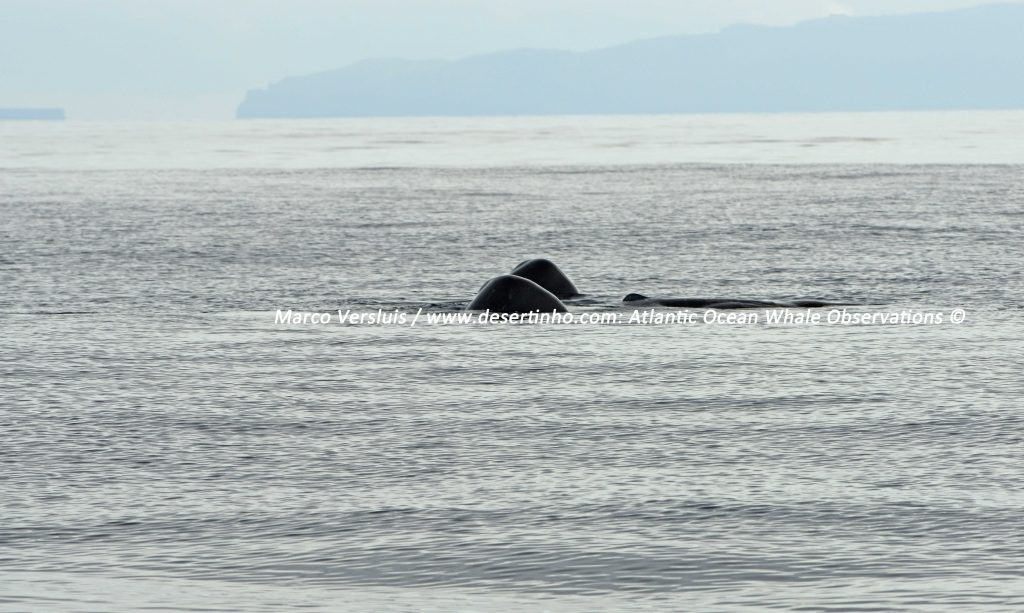
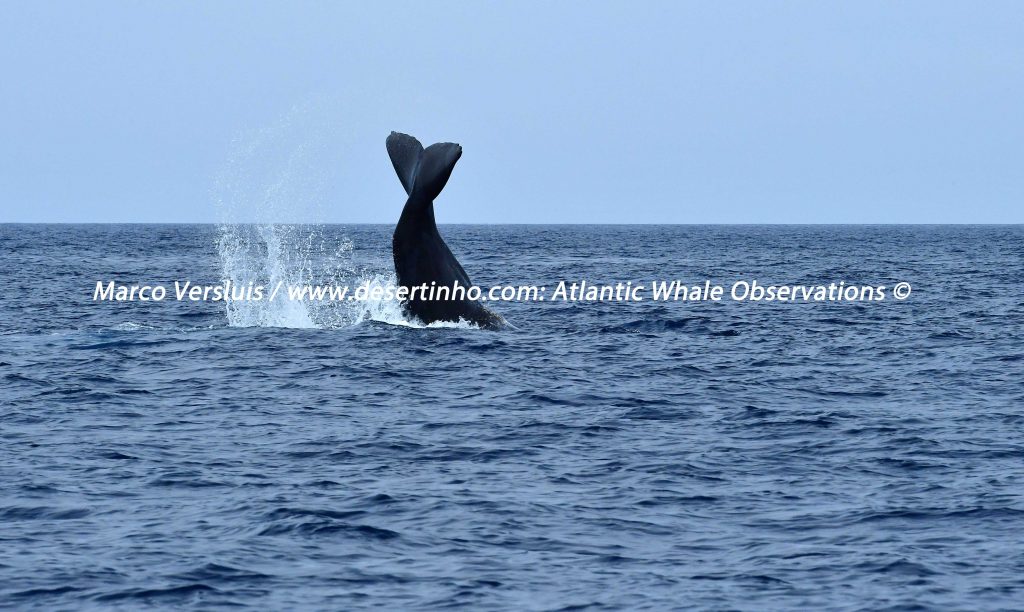
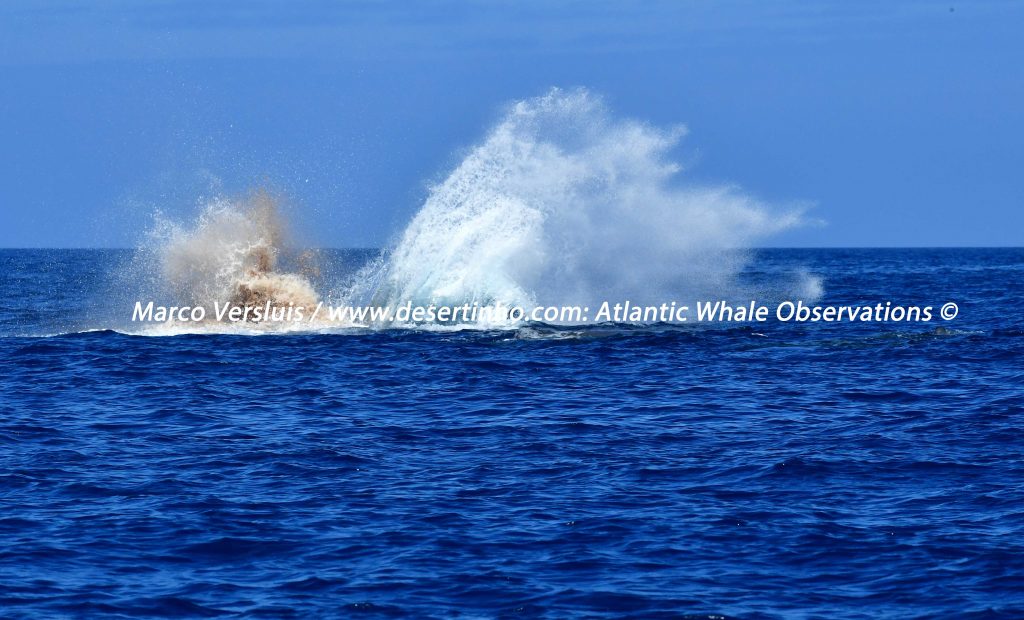
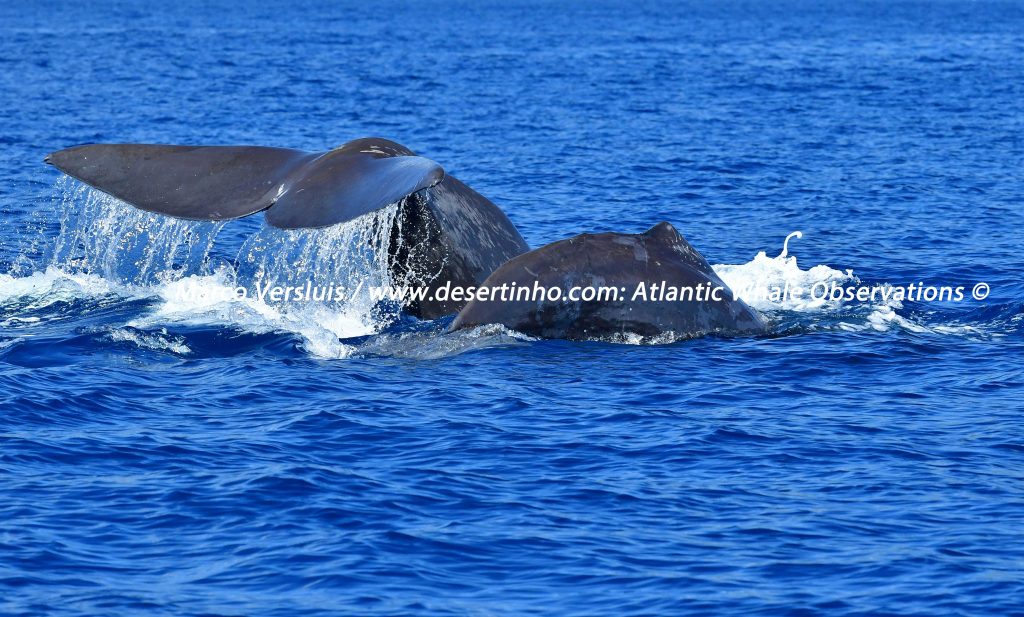
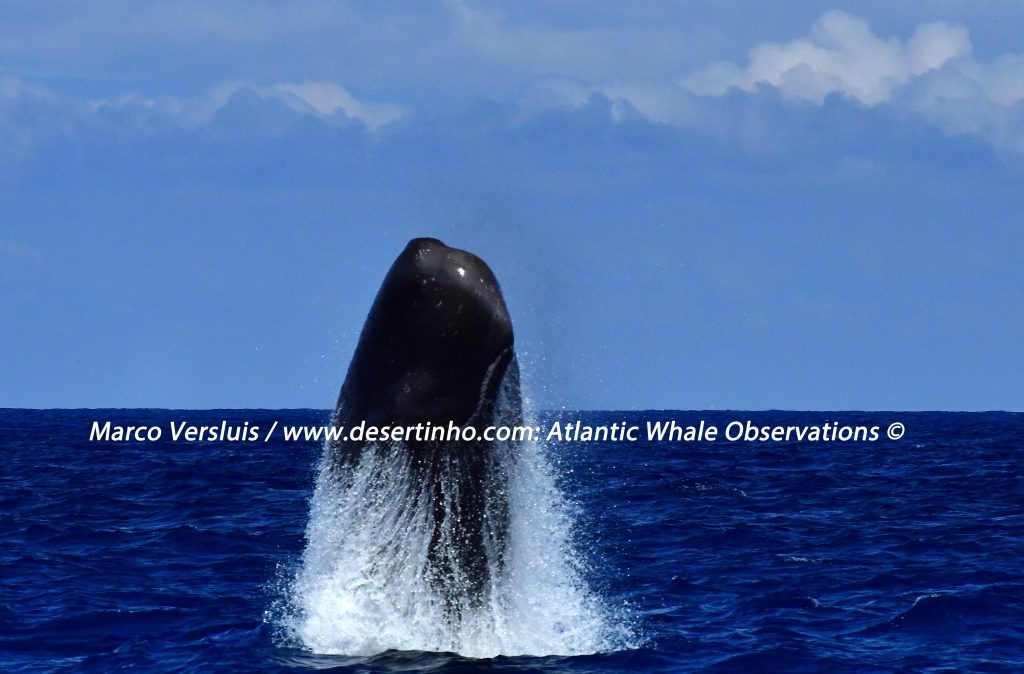
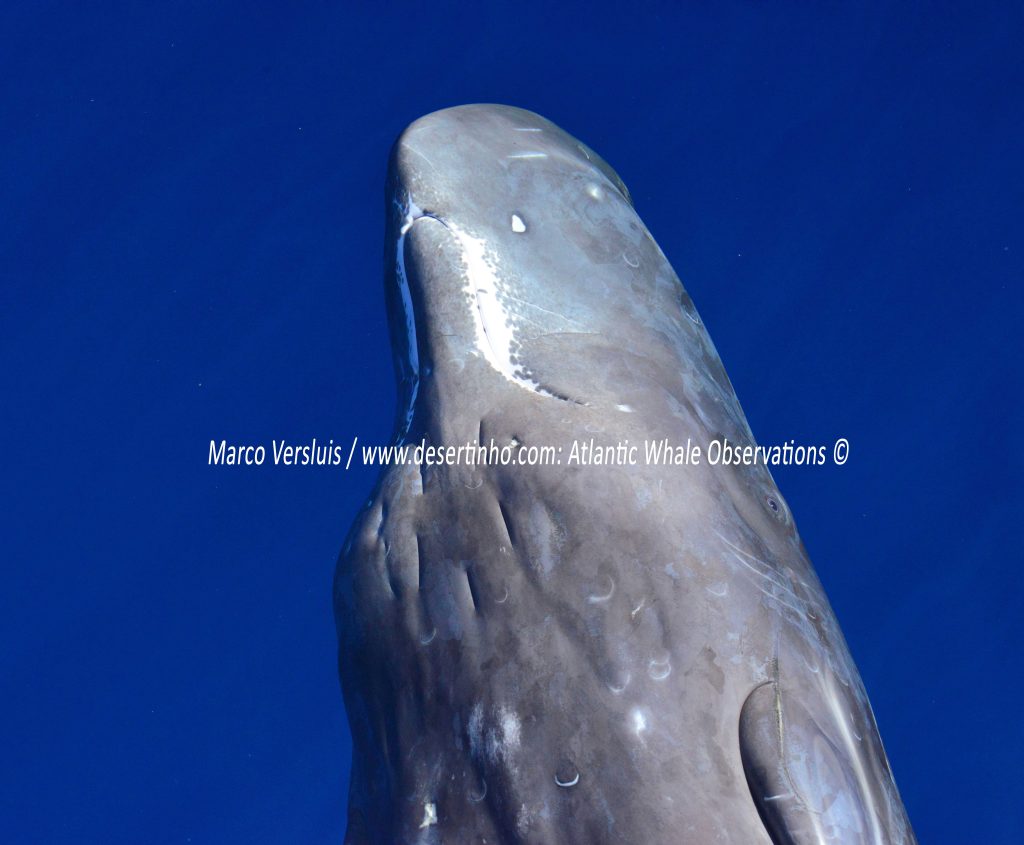
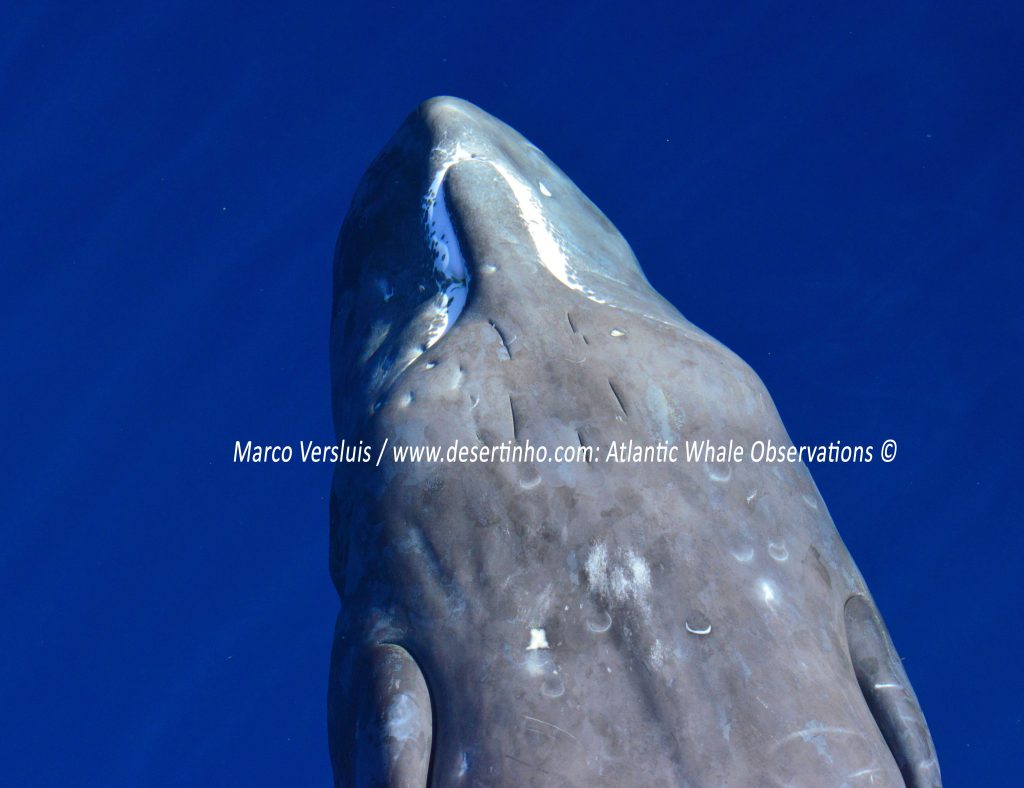
De potvis is de beste “Free diver”, het dier met het luidste volume ter wereld, en de meest mysterieuze walvis in de Oceanen. De potvis is dan ook niet te vergelijken met welke andere walvissoort dan ook. Potvissen worden regelmatig gezien in Oceanen die diep genoeg zijn en grenzen aan vulkanische continentale platen. Het voedsel van de potvis bestaat hoofdzakelijk uit “Reuzen inktvis”. De reuzen inktvis kan 11 meter worden van hun kop tot aan hun tentakels. Potvissen hebben indrukwekkende gevechten met hen in de dieptes van de Oceaan. Vanwege deze gevechten zit de kop van een potvis vol met littekens. De 8 tentakels, met haken, van de reuzen inktvis wikkelen zich tijdens het gevecht rondom de kop van de potvis. Reuzen inktvissen zijn enorm sterk en hun gemiddelde gewicht ligt tussen de 500 / 1000 KG maar ondanks deze eigenschappen verliezen ze het altijd van een volwassen potvis.
De potvis heeft alleen tanden in de onderkaak en de bovenkaak heeft speciale ruimtes waarin de tanden passen zodra ze de bek sluiten. Potvissen kunnen tot een diepte van 2 KM duiken en kunnen dan tot 1 uur onder water blijven. Zodra de potvis gaat duiken, en er geen zonlicht meer aanwezig is in de Oceaan, dan treedt hun sonar “click” in werking. Dit zelfde gebeurd zodra de potvis naar het wateroppervlak toe gaat. Zodra ze weer zonlicht waarnemen stopt hun sonar “click”. Zodra de potvis aan het wateroppervlak is dan beginnen ze met uitblazen vanuit hun enkele blaasgat. Het blaasgat van de potvis is bijzonder omdat het aan de linker zijkant van de kop zit en daarom blazen ze hun lucht uit in een boog van “45 graden”. De mythe achter dit “uit blazen” is dat elke “ blow” staat voor iedere minuut dat de potvis onder water is geweest. Dit betekend dat de potvis tot wel 60 “blows” kan geven!
Andere bijzondere kenmerken van potvissen zijn dat het: Hele sociale walvissen zijn, dat ze een heel sterke familieband hebben, en heel veel waarde hechten aan vriendschappen met andere potvissen. Potvissen blijven bijvoorbeeld hun leven lang als familie bij elkaar. De enige walvissoort die de potvis niet uit kan staan zijn Grienden“. Daarnaast is het bijzonder om te benoemen dat er zelfs een groep potvissen bestaat die een “misvormde Tuimelaar” geadopteerd heeft binnen hun familie. In het voorjaar reizen de mannelijke potvissen naar de wateren rondom de evenaar voor de vrouwelijke potvissen en komen ze daar speciaal naar toe om te paren en om hun kalveren te beschermen. De volwassen mannelijke potvissen verlaten na die periode de familie en vertrekken dan alleen, of als groep, naar de Noord-Atlantische pool wateren. De vrouwlijke potvissen, en kalveren, blijven dan achter rondom de wateren van de evenaar. Potvissen onderscheiden zich, ten op zichtte van andere walvissen, door hun bijzonder korte voorvinnen en door een hele bijzondere vloeistof in hun kop. Deze vloeistof heet “spermaceti” en is heel belangrijk voor de potvis om diep te kunnen duiken naar voedsel. Aan het wateroppervlak is spermaceti bijna vloeibaar en zodra de potvis duikt zal de spermaceti langzaam gaan stollen. Spermaceti werkt als het ware net zoals kaarsvet. Voor hun sonar “clicks” is hun spermaceti orgaan dus van groot belang. Dit orgaan maakt potvissen heel bijzonder. Tot slot, soms strandt er een potvis in Nederland en dan is het 100% zeker een mannelijke potvis.